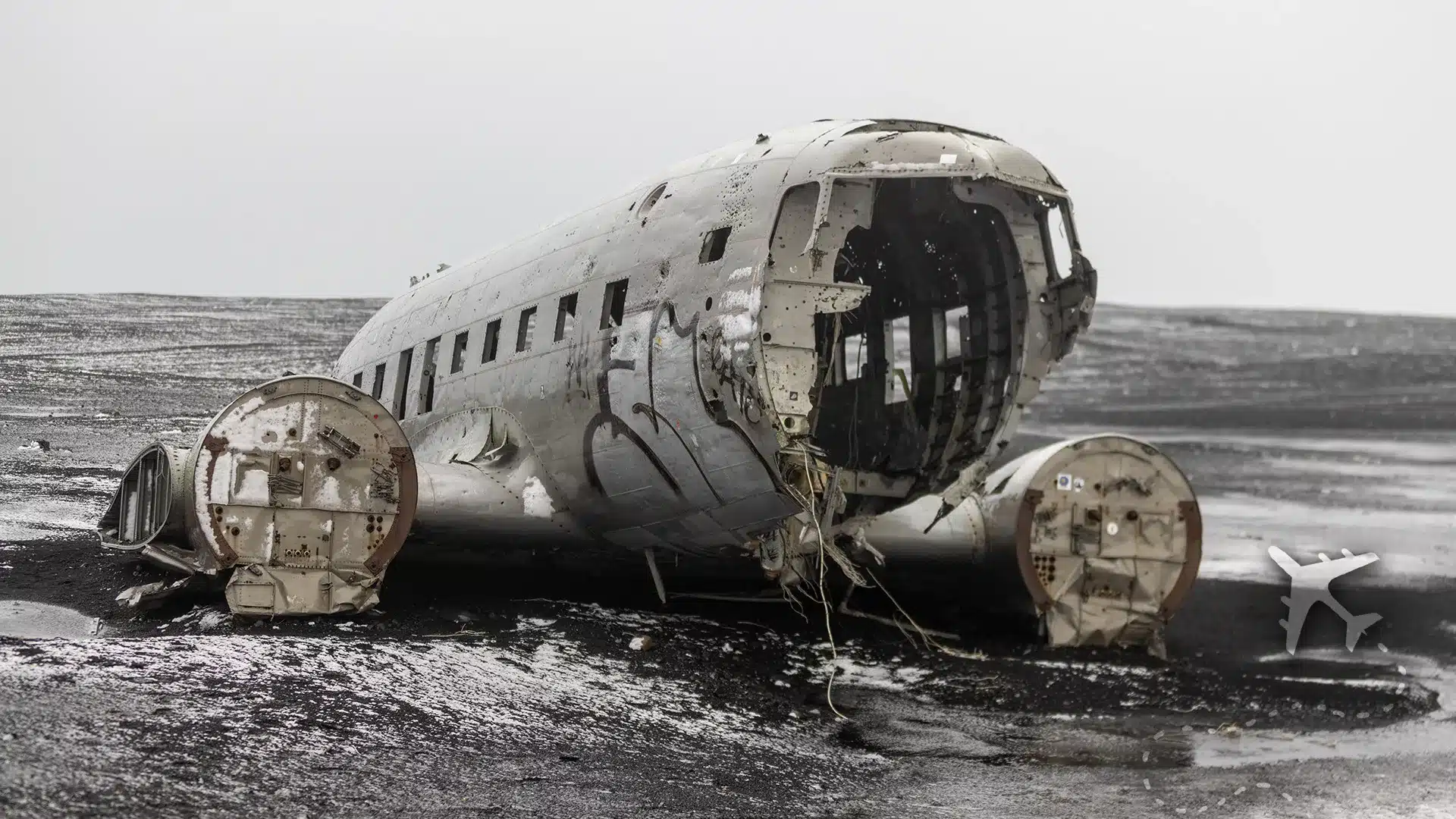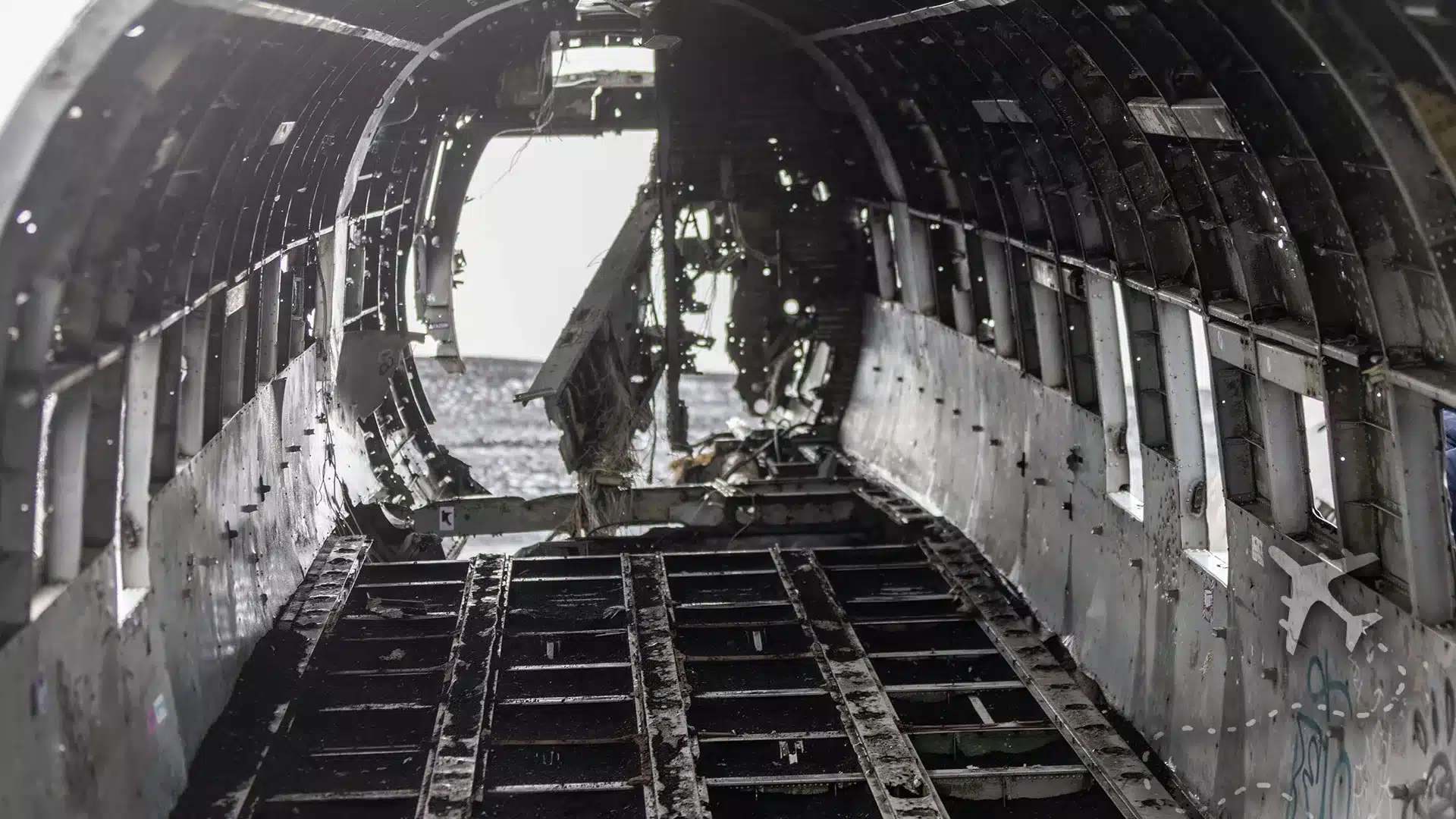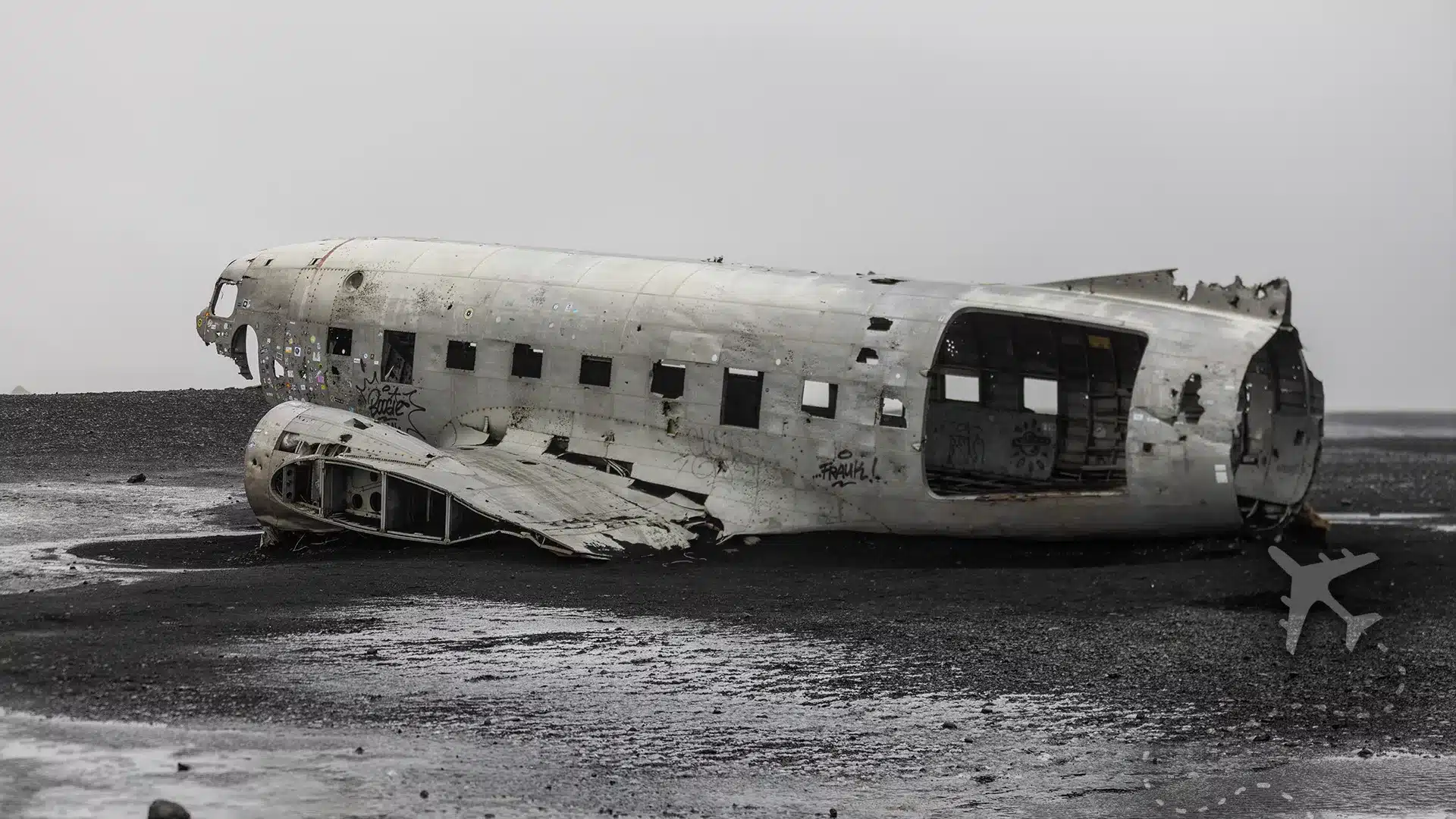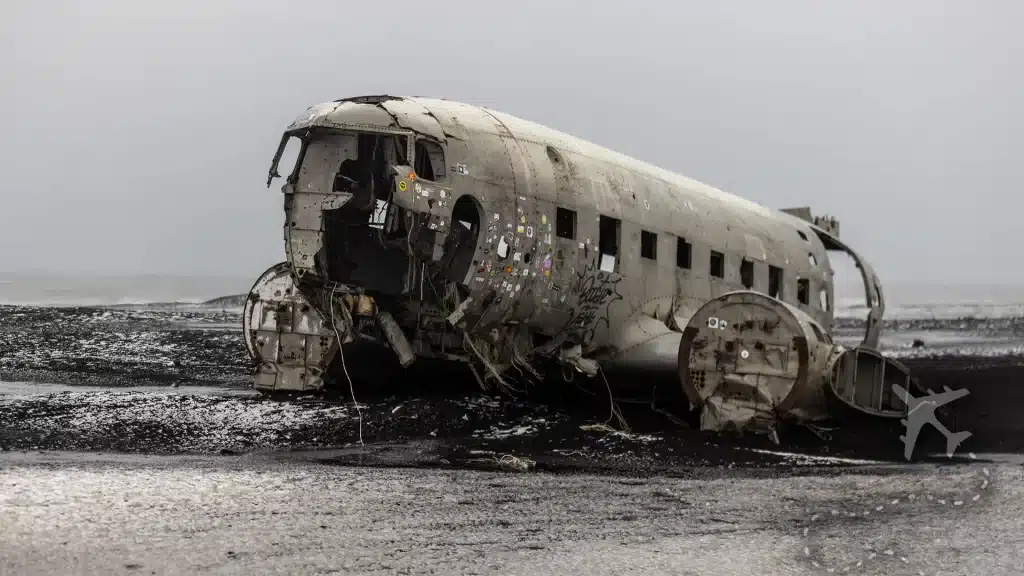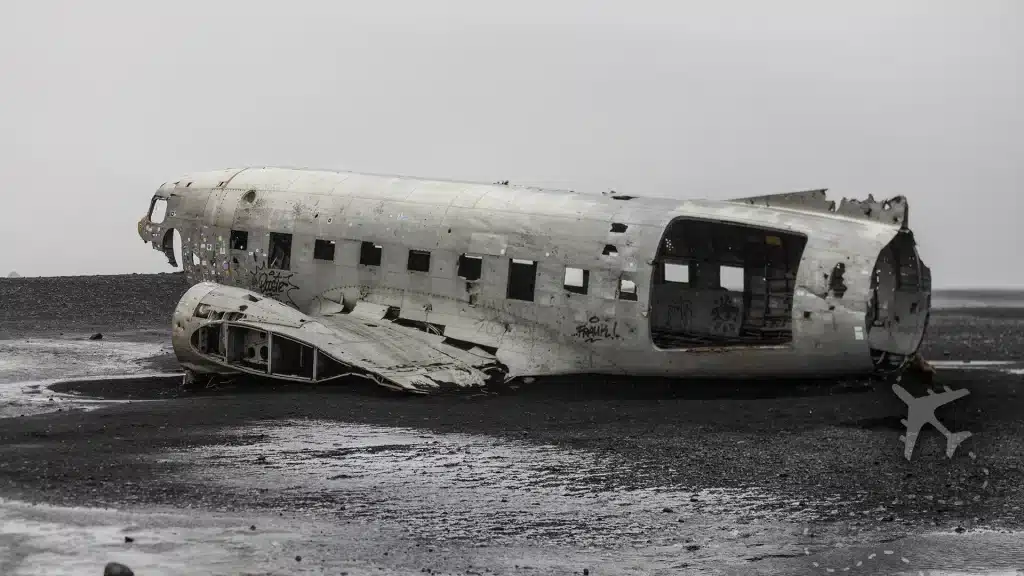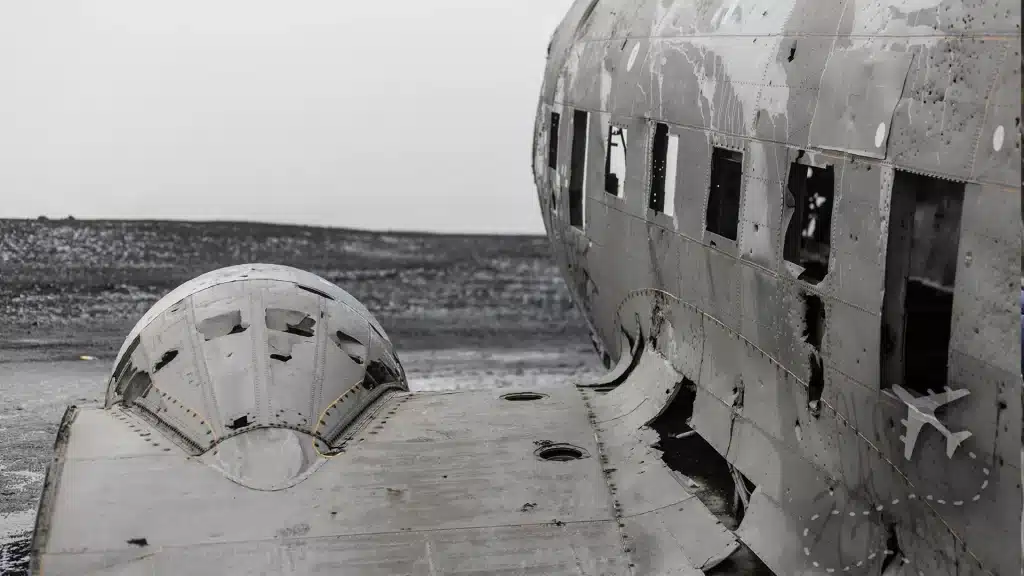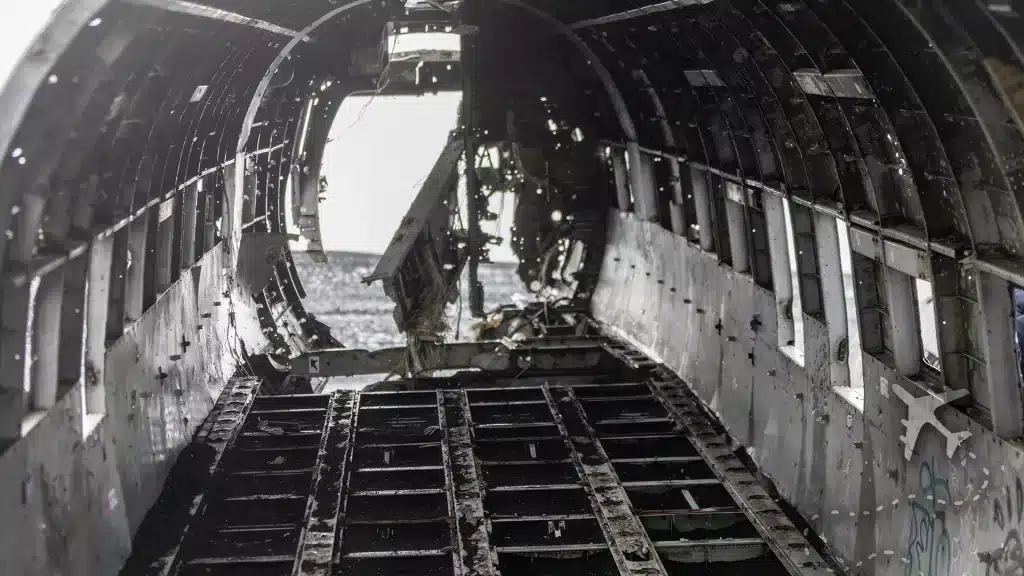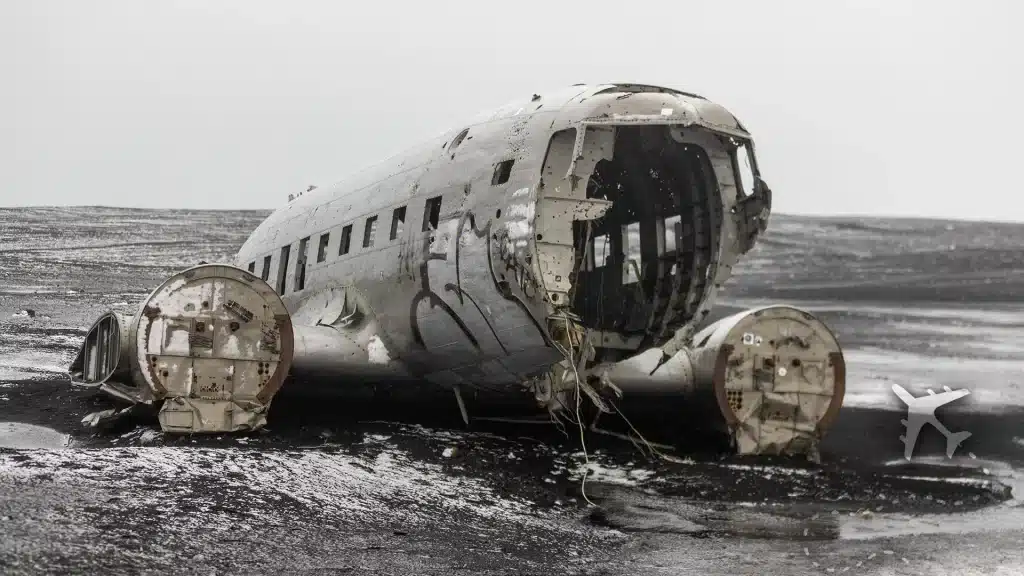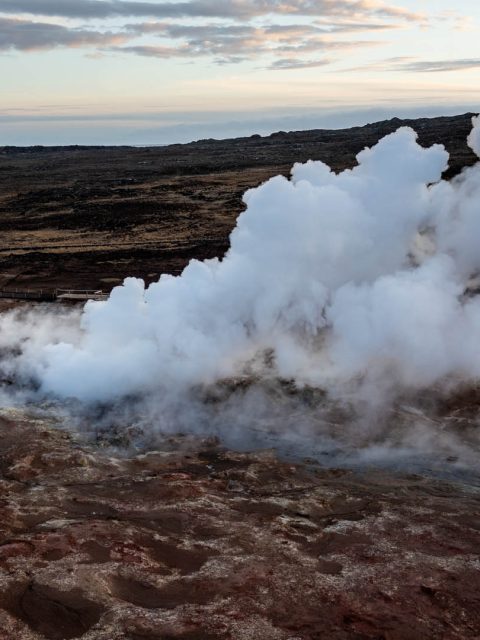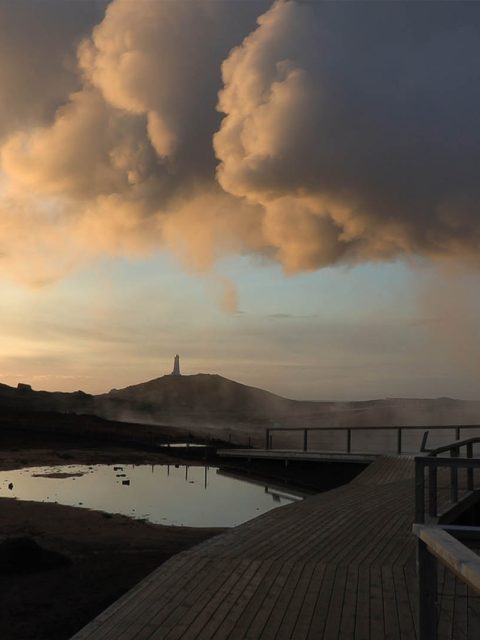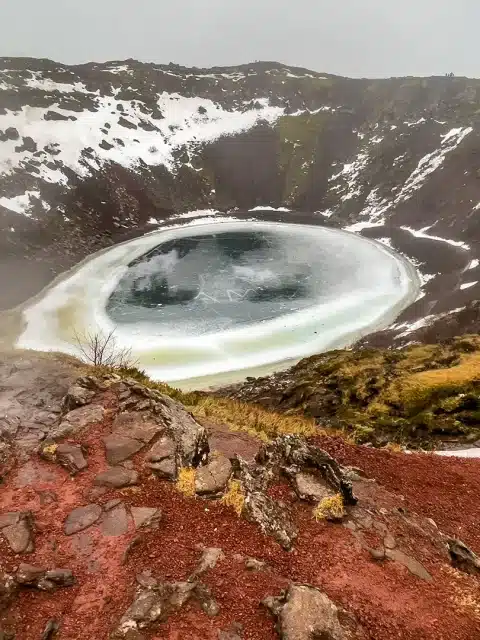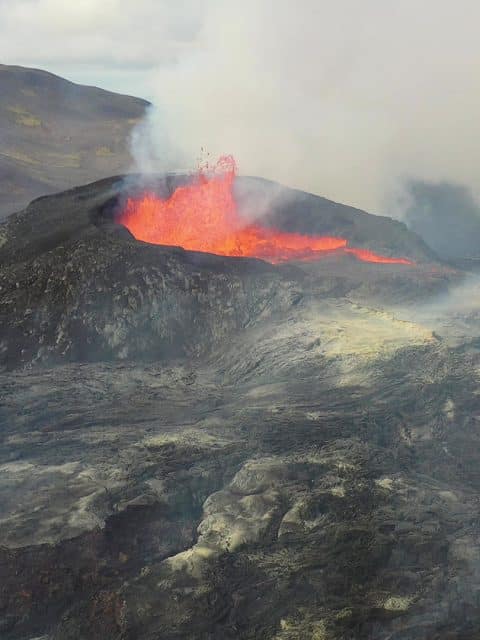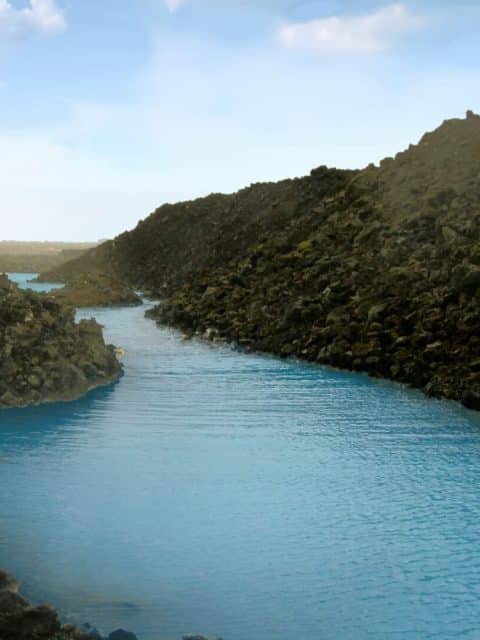There’s something mesmerizing about abandoned places. They whisper stories of the past, frozen in time, and when those places are dropped in the middle of Iceland’s desolate black sand beaches, it’s a whole other level of haunting. The DC-3 plane wreck on Sólheimasandur is one of Iceland’s most iconic (and badass) destinations for travelers with a taste for dark tourism. Here’s what you need to know before making the trek to one of the most surreal spots on Earth.
DESTINATION: Iceland DC-3 plane wreck
GPS COORDINATIONS
63.4591, -19.3647
CLOSEST AIRPORT
CURRENT WEATHER
broken clouds (4 C / 39 F)
![]()
AIR QUALITY INDEX (AQI)
Good (11)
The Story Behind the Wreck
The wreck isn’t just a random hunk of metal rusting in the Icelandic wilderness, it’s got a tale to tell. On November 21, 1973, a US Navy Douglas Super DC-3 was forced to make an emergency landing on the remote Sólheimasandur beach. Engine trouble? Pilot error? Alien intervention? (Okay, maybe not that last one.) Turns out, it was due to severe icing that crippled the engines. Miraculously, all crew members survived. What’s left behind is the skeletal remains of the aircraft, stripped of its wings and other parts over the years, left to weather the unforgiving elements of Iceland.
From Forgotten Relic to Insta-Famous Landmark
The plane sat largely unnoticed for decades, blending into the barren landscape like something out of a dystopian sci-fi movie. But then came Instagram. By the mid-2010s, photographers and influencers put this eerie wreck on the map, turning it into a bucket-list destination for anyone with a camera and a sense of adventure.
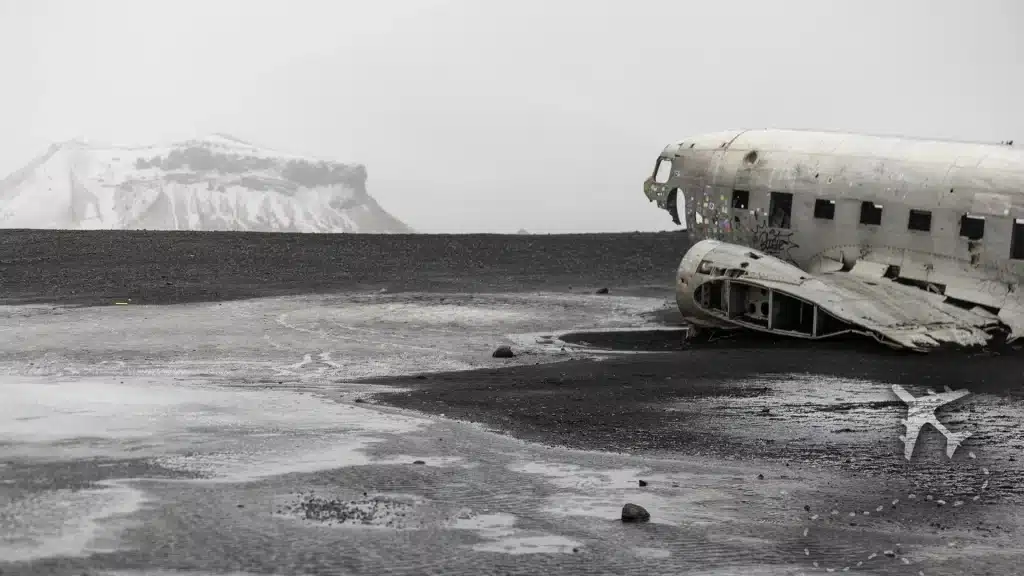
It’s not hard to see why. The contrast between the black sands, Icelandic landscapes, and the silver fuselage creates a scene so eerie it could be the set of a post-apocalyptic blockbuster. Add in the northern lights during winter or an epic sunset in summer, and you have a recipe for viral content and an unforgettable experience.
When to Visit
Timing is everything in Iceland. The wreck is accessible year-round, but each season offers a completely different vibe:
- Summer (June-August): Midnight sun means extended daylight hours, making it easier to visit late in the evening when the crowds thin out. Bonus: warmer weather and clearer skies.
- Winter (November-February): If you’re brave enough to handle Iceland’s brutal winter winds (like I did), you’ll be rewarded with a shot at seeing the northern lights dancing above the wreck. Just be prepared for icy, cold conditions on the walk.
- Shoulder Seasons (Spring and Fall): Fewer tourists, manageable weather, and a sense of solitude that amplifies the eerie atmosphere.
Avoid peak hours (late morning to early afternoon) unless you’re into sharing the vibe with a small army of other travelers.
The Trek to the Wreck
Gone are the days when you could drive up to the plane. These days, you’ll need to park in the designated lot off Route 1 and hike your way across the vast expanse of Sólheimasandur’s black sands. The walk is about 4 kilometers (2.5 miles) each way, and there’s zero shade or protection from the elements, so dress smart. Think sturdy boots, layers, and something waterproof.
There’s also an optional monster shuttle service that runs during peak seasons if walking isn’t your thing, but trust me; there’s something about the solitary march across the stark, endless expanse that makes the arrival all the more powerful.
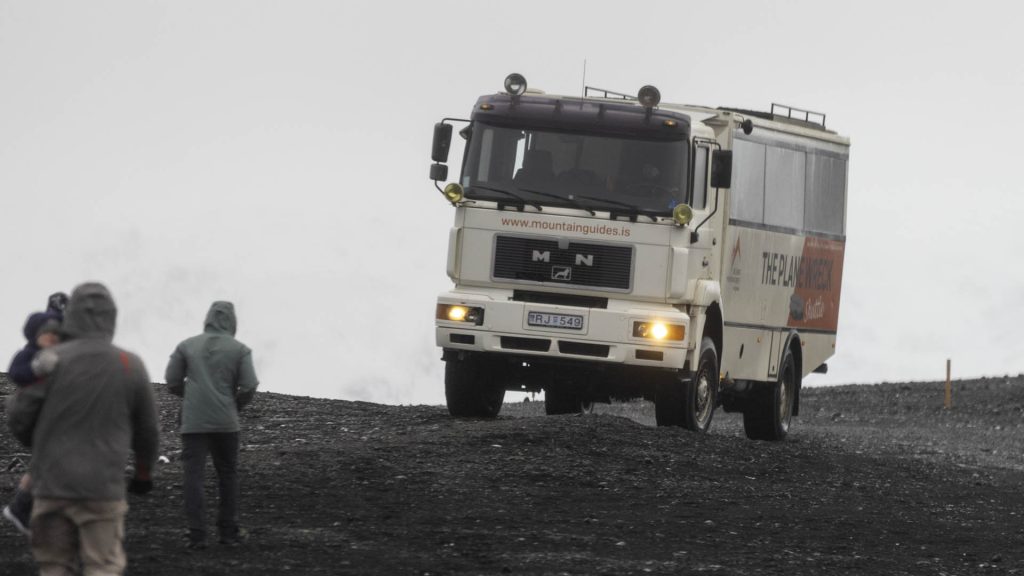
What to Expect
The wreck itself is smaller than you might imagine but no less impressive. The way the broken fuselage contrasts with the wild, empty landscape makes for a hauntingly beautiful scene. Be respectful, don’t climb on it, graffiti it, or otherwise trash the place. This isn’t just a cool photo spot; it’s a piece of history.
If you’re lucky, you’ll have the wreck to yourself, and the isolation will make the experience even more surreal. Otherwise, lean into the shared vibe with fellow travelers—you’re all there chasing that same eerie magic.
Iceland plane wreck Uncensored
I visited the DC-3 plane wreck during what was probably the worst time of year, winter, in the middle of an angry storm. The wind was howling at a brutal 70 kilometers per hour (45 miles per hour), and the temperature hovered just above freezing at 0°C (30°F). It was a raw, unforgiving day, the kind of weather that strips away any illusions of comfort.
Being both lazy and not a fan of the cold, I skipped the long hike across the black sands and opted for the monster bus shuttle from the roadside parking lot. It runs every 30 minutes and was the perfect choice for staying semi-warm while still getting the full, dramatic experience.
Visiting the Iceland plane wreck isn’t just about reaching a cool landmark; it’s about embracing the journey to the edge of the world. The cold, the wind, the eerie isolation, all of it combines to remind you just how small you are in the face of Iceland’s vast, untamed wilderness.
So, whether you hike or take the shuttle, lace up your boots, bring your sense of adventure (and maybe a flask of something warm), and go see it for yourself. Trust me, this is one wreck you’ll be glad you walked away from, if only to brag about how badass it truly was.



